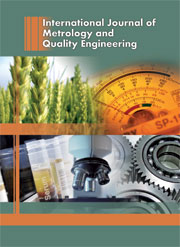Article contents
An investigation of indicators for controlling the quality of afixture
Published online by Cambridge University Press: 17 December 2010
Abstract
The quality of fixtures plays an important role in product quality during manufacturing,measuring or assembly. Finding methods for evaluating a fixture’s quality, which maydepend on workpiece errors, fixture errors, influences of clamping force, friction, etc.,is necessary to improve the product quality. This paper proposes the indicators that areused for estimating the quality of a fixture based on workpiece localizationrepeatability. Here, the workpiece localization will be considered in the followingdifferent cases: (1) considering only the influence of different geometric parameters(types) of the fixture, (2) taking into account the clamping force in the different typesof the fixture, (3) the influence of friction on the contacts of the workpiece-fixture. Afixture model is presented and analysed with some examples. An experimental fixture andworkpiece are then used to analyse and compare with the theoretical results.
- Type
- Research Article
- Information
- International Journal of Metrology and Quality Engineering , Volume 1 , Issue 2 , 2010 , pp. 71 - 82
- Copyright
- © EDP Sciences 2010
References
Références
- 1
- Cited by


